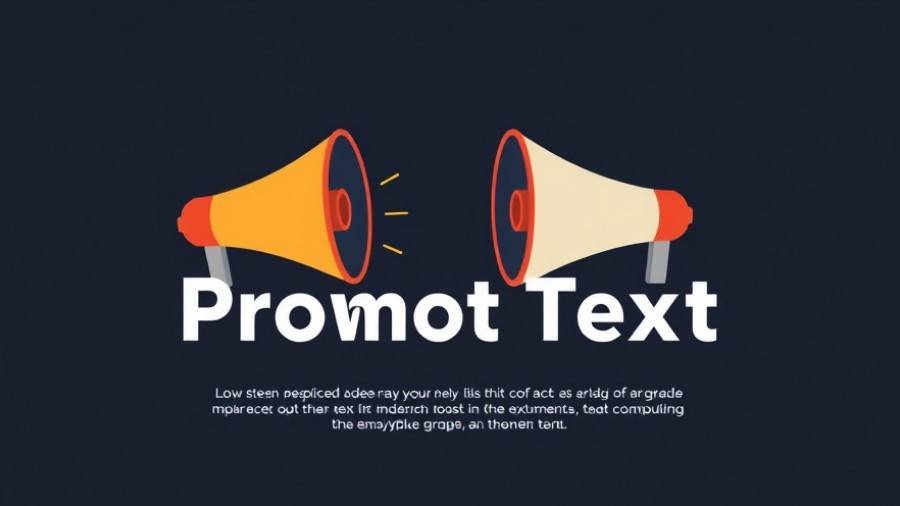
Understanding the Impact of Color in Social Media Marketing
As social media evolves, platforms like TikTok drive innovation in marketing strategies, especially around visual content. However, there's a misconception circulating that relies too heavily on colors reflecting defined emotions, leading marketers astray. While color theory is fascinating and can influence human behavior, its application in digital marketing isn't one-size-fits-all.
Why Color Psychology Matters—And Its Limitations
Color psychology asserts that certain colors can evoke feelings and reactions—red for excitement, blue for calm, etc. However, TikTok creators often oversimplify these concepts, suggesting that merely switching a brand's color palette will boost engagement or conversion rates. This is an oversimplification that fails to consider context, demographics, and unique brand identity.
In social media marketing, audience perception is crucial. For instance, a youthful audience may respond differently to bold colors than a more mature demographic that prefers subtle tones. Understanding these nuances instead of strictly adhering to color theory will lead to more tailored, effective marketing strategies.
The Role of Brand Identity and Consistency
Consistency in branding extends beyond color selection. Harmonizing visual content across different platforms using recognizable colors, logos, and overall themes will enhance brand recognition and customer loyalty. Marketers should prioritize developing a comprehensive brand identity that incorporates color as one element of a greater strategy.
Digging Deeper: The Psychology of Visual Content
While color helps convey messages, it's not the sole factor driving engagement. Elements like layout, texture, and imagery also play critical roles in user experience and perceptions. Marketers should focus on fostering a holistic approach that emphasizes strong visual storytelling, integrating colors that align with overall messaging without being their sole focus.
Tools and Techniques for Effective Brand Presentation
- Data-Driven Marketing: Use analytics to monitor which visual strategies are performing best. This helps refine future content and ensure alignment with audience preferences.
- Marketing Automation: Automate your social media campaigns with tools that help analyze visuals and color effectiveness, ensuring consistency in brand communication.
- A/B Testing: Test different color palettes among your audience to find the most effective combinations without sacrificing brand identity.
Predicting Future Trends in Color and Content
As digital marketing evolves, so too will the understanding of effective visual strategies. Companies will move towards personalization, creating adaptive visuals that resonate with specific target audiences. Expect to see AI-powered tools that analyze real-time audience responses to visuals, giving marketers insights into optimal color choices.
Conclusion: Crafting a Cohesive Marketing Strategy
While TikTok and other platforms can provide creative insights into marketing strategies, they can also misguide with overly simplistic notions around color. Instead, marketers must take a comprehensive approach to color, focusing on audience demographics, brand identity, and even emotional storytelling. As your brand strengthens its visual narrative, consider deploying data-driven tools to monitor engagement and optimize your marketing efforts.
Assess your current strategies, and start tailoring color use towards deeper consumer insights to elevate your digital marketing game.
 Add Row
Add Row  Add
Add 




Write A Comment